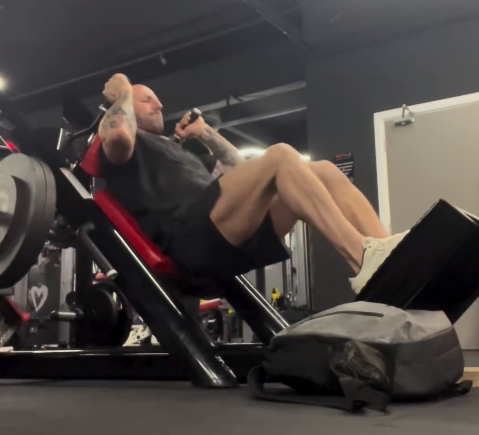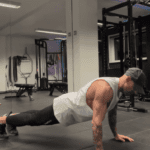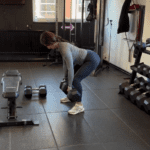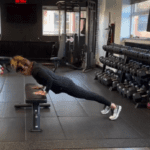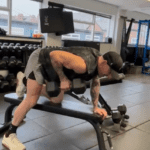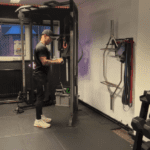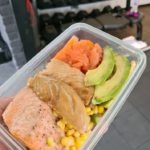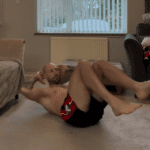As the saying goes, you should never miss leg day! Leg day can be a great way to improve your fitness level and achieve your fitness goals. It is an important part of a balanced fitness routine, as the legs contain the largest muscle groups in the body.
Here are some tips and exercises to consider for your leg day training:
- Choose the right exercises: Ficus on compound movements that work muscle groups; these exercises are effective for building strength and muscle in the legs, as well as improving overall fitness. some of the best compound exercises are:
- Barbell squats: This is considered one of the most effective compound exercises for the legs, targeting the quadriceps, glutes, and hamstrings.
- Deadlifts: The conventional deadlift and its variations like the Romanian deadlift work the hamstrings, glutes and lower back.
- Leg press: This exercise targets the quadriceps, hamstrings and glutes.
- Barbell glute bridges: This movement primarily works the glutes and hamstrings.
- Lunges: Forward, reverse and lateral lunges engage the quadriceps, hamstrings and glutes.
- Goblet squats: This squat variation with a dumbbell or kettlebell is an effective compound exercise for beginners.
- Front squats: This squat variation emphasises the quadriceps more than the traditional back squat.
- Hack squats: This machine-based exercise targets the quadriceps, hamstrings, and glutes.
- Hip thrusts: This compound movement primarily works the glutes and hamstrings.
The key is to incorporate a variety of these exercises that target multiple muscle groups in the legs to build overall strength, size and power. A Personal Trainer can help you design an effective leg day routine using these exercises.
- Progressive overload: Increase the weight, reps, or sets gradually over time to challenge your muscles and promote growth; this can be done by adding weight to the barbell or increasing the resistance on gym machines. It would be advised to start with lighter weights and focus on proper form to avoid injury, then gradually increase weight and intensity over time.
- Variety: Incorporate different types of exercises to target various muscle groups and avoid plateaus. For example, mix up front and back squats, Bulgarian split squats, and leg presses.
- Proper form: Ensure that you maintain good form during all exercises to avoid injury and maximise the effectiveness of your workouts. Personal Trainers can help you with this, and provide guidance on technique.
- Rest and recovery: Allow your muscles to rest and recover between workouts. Aim for at least one rest day per week and consider incorporating active recovery activities such as stretching or light cardio on your off days. You should also always warm up thoroughly before the workout and cool down properly afterwards to aid recovery.
- Nutrition: Support your leg day training with a balanced diet that provides adequate protein and calories for muscle growth and recovery.
- Consistency: Stick to your leg day training routine consistently, aiming for at least 2-3 sessions per week. Over time, you will see improvements in your strength, muscle tone, and overall fitness.
Remember, everyone’s fitness journey is unique, so it is essential to find a workout that suits your individual needs and goals. A Personal Trainer can help you create a customised leg day training plan that fits your fitness level and goals.
Some common mistakes to avoid during leg day are:
- Skipping leg day or not training legs frequently enough. Legs make up a large portion of your body, so neglecting them can lead to muscle imbalances and an unbalanced physique.
- Not lifting heavy enough weights. To stimulate muscle growth, you need to challenge your legs with heavier loads, while maintaining proper form.
- Doing too many isolation exercise and not enough compound movements like squats and deadlifts. Compound exercises work multiple muscle groups and are more effective for building overall leg strength and size.
- Performing exercises with poor range of motion, such as partial squats. Going through a full range of motion is important for targeting all of the muscle fibres.
- Not warming up properly before the workout. Failing to warm up can increase the risk of injury during the more intense leg exercises.
- Doing too many exercises or too much volume in a single leg workout. Overtraining the legs can lead to excessive soreness and hinder recovery.
- Not tracking or progressively overloading your workouts. Keeping a training log and gradually increasing weight, reps or sets over time is crucial for continued progress.
- Neglecting the hamstrings and glutes and focusing too much on just the quadriceps.
The key is to find the right balance of compound exercises, proper form, progressive overload and recovery to maximise the effectiveness of your leg day training with a Personal Trainer.
A Personal Trainer is an investment in your health and well-being that can lead to long-term positive effects on your fitness, confidence, and overall health. PT Hale prides itself on being a social and safe space where you can work out individually, or with like-minded people to get the results that you want and deserve – LET’S GO!

